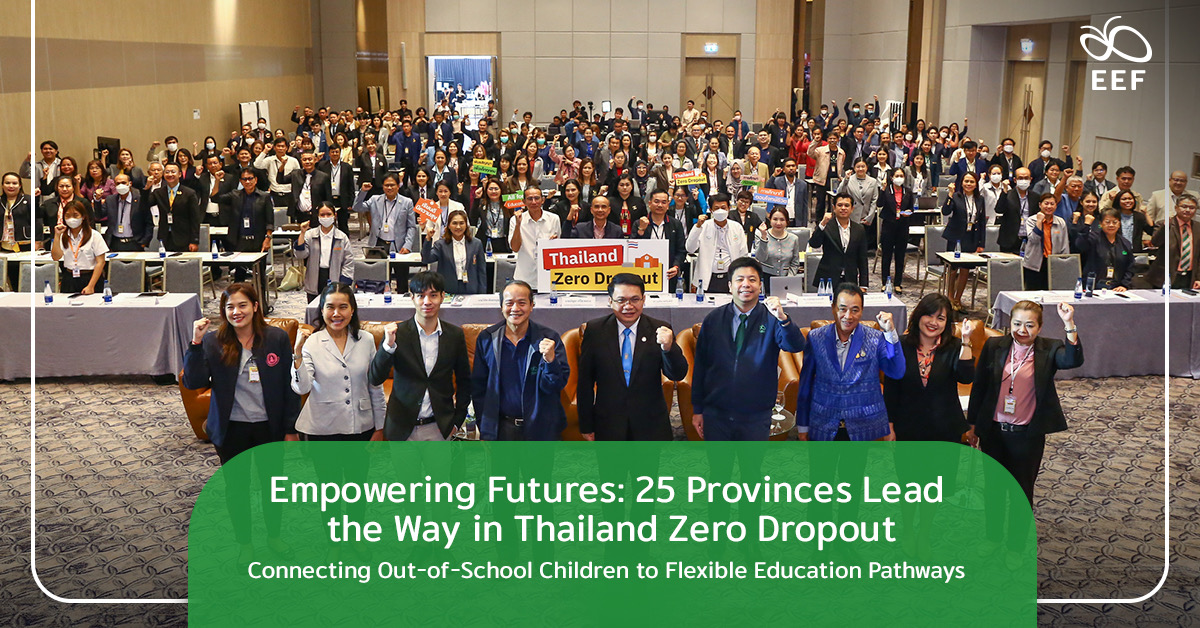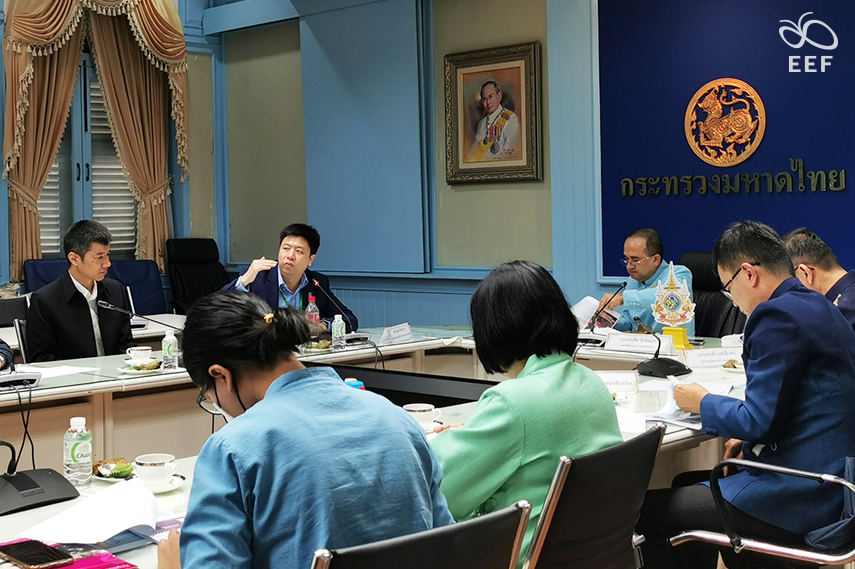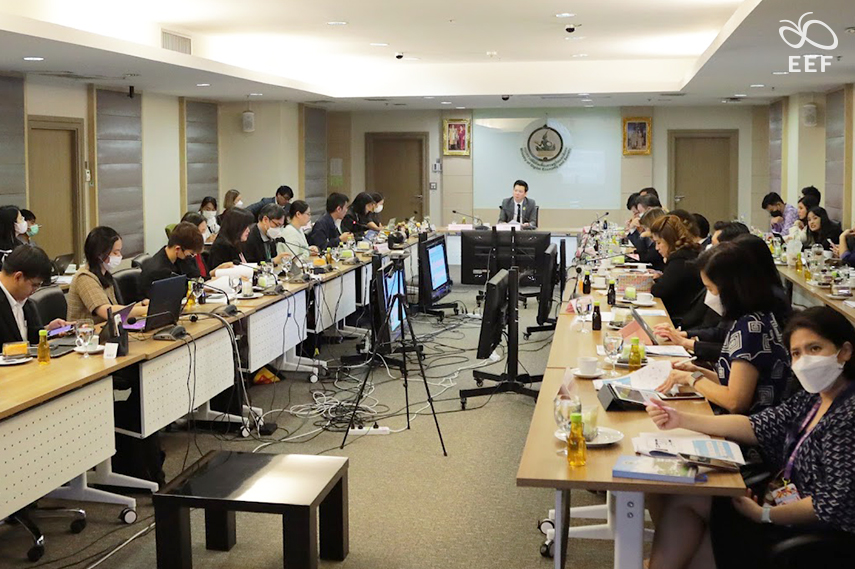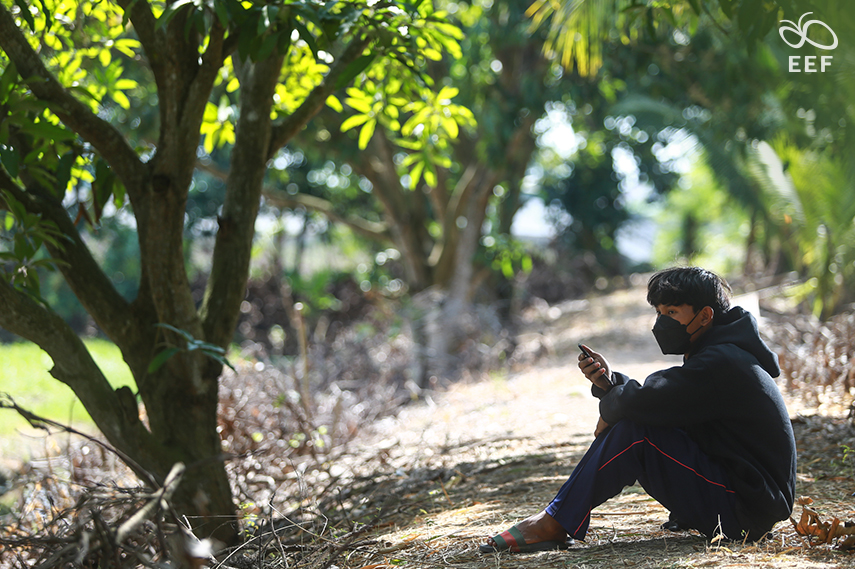
From a modest inception, the Zero Dropout initiative — initiated by the Equitable Education Fund (EEF) Thailand and supported by collaboration with key stakeholders like Sansiri Public Company Limited, Ratchaburi Education Area Office (District 1), and King Mongkut’s University of Technology Thonburi (KMUTT – Ratchaburi Campus), has burgeoned into a formidable catalyst against Thailand’s pressing educational disparities. This collaborative endeavor, aptly named for its mission, meticulously addresses the prevention and reintegration of dropouts back into the educational system through innovative strategies and strategic alliances. The initiative’s nucleus lies in the “Suan Phueng Model,” a beacon of hope aiming not only to bring dropout rates to zero but also to spotlight and rectify Thailand’s broader educational inequalities. This concerted effort envisions an empowered future where every child enjoys equal access to quality education.
The transformative journey has taken a monumental leap as it integrates into the “Thailand Zero Dropout” policy, championed by the steadfast leadership of Prime Minister Srettha Thavisin — a staunch advocate for the cause himself. This evolved initiative is poised to revolutionize policies, leveraging the unwavering commitment of 25 pioneering provinces —Mae Hong Son, Chiang Mai, Chiang Rai, Lampang, Nan, Phayao, Phitsanulok, Sukhothai, Khon Kaen, Nakhon Phanom, Nakhon Ratchasima, Roi Et, Surin, Ubon Ratchathani, Chonburi, Rayong, Trat, Sa Kaeo, Bangkok, Nonthaburi, Pathum Thani, Kanchanaburi, Ratchaburi, Songkhla, Surat Thani, Krabi, Yala, and Pattani — each drawing upon its rich and unique local experiences to dismantle the barriers of educational inequality. The Prime Minister‘s visionary leadership propels this policy forward, emphasizing a profound understanding of the struggles faced by out-of-school children and youth. As these provinces align with the overarching vision, a collective force emerges, ready to navigate the intricacies of the dropout issue.

Past collaborative efforts have proven successful, impacting hundreds of thousands positively. Recognizing that the scope extends beyond school-aged children, the collective effort must broaden to encompass both early childhood and upper secondary education. This expanded vision necessitates a comprehensive approach involving care, support, and monitoring to ensure robust opportunities for their return to learning. At the heart of this endeavor lies the utilization of existing data systems within each relevant agency, strategically aligned and matched to comprehend the full extent of out-of-school children and youth. This data-driven approach facilitates the exploration of proactive strategies, both within and outside the formal education system. Importantly, the focus has shifted; it’s not solely about bringing them back, but equally about igniting motivation in every child to discover a personalized and meaningful learning path.

At the forefront of addressing the challenges surrounding children and youth dropping out of the educational system stands the pivotal role of local communities. The Ministry of Interior has spearheaded this effort with sustainable village development projects, delving into crucial aspects like infrastructure, housing, income, and well-being. The overarching objective transcends local concerns, aiming to alleviate issues at the grassroots level and ultimately contribute to the reduction of socio-economic disparities on a national scale. Acknowledging education’s significance in propelling collaborative endeavors, the Ministry champions the Thailand Zero Dropout initiative through provincial education committees, positioning provincial governors and education directors at the forefront. This comprehensive initiative extends its mission beyond overseeing the well-being of children and youth to encompass the working-age population that has never undergone formal education, striving to provide access to vocational training, impart essential knowledge and skills, foster self-development, and elevate overall living standards.

In tandem, for school-aged children, approximately 1,000 community-supported schools operate under local supervision. The Ministry strategically employs district-level task forces, conducting thorough household surveys in every community, ensuring a nuanced understanding of multifaceted issues, including those related to out-of-school children. Employing a real-time accessible data system that is continuously updated, the Ministry transmits crucial information to provincial educational officers and educational service area offices, facilitating immediate collaborative solutions. This dynamic approach guarantees that out-of-school children receive targeted interventions promptly, enabling their swift return to the learning environment.
Within the vast landscape of educational support, the Ministry of Public Health strategically leverages the expertise of Village Health Volunteers (VHV) as a compelling and localized operational tool at the household level. While the VHVs hold significant potential to contribute to educational endeavors, the key lies in establishing unequivocal and mutually understood job scopes to optimize its impact. The synergy between health and education brings forth a unique opportunity to address challenges comprehensively, emphasizing the importance of clear delineation in roles.
In the realm of data-related work, a critical imperative emerges —sustainability. The successful collaboration of previously separated units to generate Big Data showcases the potential for impactful outcomes. However, the narrative pivots towards the perpetual nature of this collaboration within the overarching policy framework. As the groundwork is laid with a rich database at disposal, the focal point shifts towards not just preserving but enhancing this collaborative effort. The crucial juncture demands a strategic determination of how to effectively harness the extensive data available. It beckons collaborative endeavors to channel their energy into designing an efficient and purposeful methodology for utilization. This forward-looking approach ensures that the wealth of data contributes maximally to the holistic care and assistance provided to children and youth, creating a dynamic and responsive ecosystem.

At the forefront of Thailand’s innovative approach to tackling educational challenges, the Ministry of Digital Economy and Society champions the transformative power of Big Data in propelling the Thailand Zero Dropout initiative toward sustainable success. Leveraging vast datasets compiled from various ministries, the Ministry discerns a crucial correlation with localized data pertinent to out-of-school children, including economic household information across different provinces. This localized data serves as a pivotal indicator, shedding light on the intricate web of factors contributing to children dropping out of the educational system and offering actionable insights into targeted intervention strategies.
As the comprehensive dataset takes shape, the Ministry underscores the paramount importance of effective data management and preparation. Beyond mere administrative tasks, meticulous preparation ensures the timely and purposeful utilization of data by all relevant agencies, fostering synergy in planning and support initiatives. Moreover, the Ministry advocates for the strategic integration of diverse data sources, ranging from population registration to student enrollment records, to construct a comprehensive view of dropout scenarios. This holistic approach enables swift responses and ongoing care for at-risk children, epitomizing a dynamic and proactive stance against educational inequality.

Delving into the complexities of educational challenges, the Equitable Education Fund (EEF) Thailand unfolds a comprehensive narrative surrounding the ambitious Thailand Zero Dropout initiative, meticulously laying out a roadmap for its implementation. At the core of this initiative is a nuanced approach to tracking and identifying out-of-school children and youth, a process that involves categorizing them into distinct groups. The first group involves children never part of formal education or those enrolling late, necessitating collaboration for effective support. The second group includes those who dropped out, tracked via the 13-digit national identification number. Lastly, the third group comprises at-risk students within the formal educational system, facing challenges like disabilities or socio-economic disadvantages, making them susceptible to dropping out. Recognizing the multifaceted nature of this challenge, the EEF, in response, advocates for the implementation of innovative educational systems, including flexible skill development and tailored learning plans, as proactive measures to prevent dropouts and ensure continuous personal development.

In the pursuit of fostering flexible and innovative educational pathways, especially for pivotal transitions from lower to upper secondary education and from upper secondary education to tertiary education, the EEF’s emphasis extends beyond the conventional realm of the classroom, focusing on providing diverse options aligned with individual circumstances, such as vocational skill development and simultaneous work opportunities. Recognizing the need for collaborative efforts among various agencies, the EEF envisions a future where the goal is not merely to bring every child back to the classroom but to create a rich tapestry of diverse learning opportunities aligned with their lives and needs.
To materialize this vision, dedicated volunteers immersed in educational initiatives will conduct community surveys to locate out-of-school children. This information, when consolidated and connected through administrative units, will not only facilitate the return of children to formal schooling but also pave the way for linking them with relevant agencies for skill development and job placement. The overarching objective is to construct a comprehensive and sustainable educational framework that transcends traditional schooling, embracing innovations like mobile schools, the three-system school model, and area-based education. These dynamic approaches aim to provide diverse learning opportunities and options for personal development, ensuring that each region tailors educational innovations to its unique context, creating a transformative ripple effect across the educational landscape.

Prime Minister Srettha Thavisin’s announcement of the Thailand Zero Dropout policy is a momentous commitment, signifying profound implications for every child and youth across the nation. As all relevant agencies actively engage in the transformative implementation of this initiative, a series of crucial policies have been set in motion, aiming to ensure optimal education for children and youth, cultivating knowledgeable and capable citizens. Among these policies is a targeted effort to alleviate the workload of teachers, enabling them to dedicate ample time to each student and thus mitigating the risk of dropout. Simultaneously, a drive to modernize the education system underscores a shift toward learning anytime, anywhere, liberating education from the constraints of traditional classrooms. The emphasis on a robust monitoring system to prevent student disengagement aligns seamlessly with the mission of the Equitable Education Fund (EEF) Thailand, which is to reduce education inequality through research, collaboration, and support for children, youth, and adults in need. This integrated approach signifies a concerted effort to not only minimize dropouts but also to address broader educational disparities, encapsulating the EEF’s ethos and contributing to a more equitable and inclusive educational future in Thailand.

